Alfa Romeo Junior vs Mercedes C-Class Wagon – Which car suits you better?
Both models have their strengths – but which one suits you more?
Compare performance, efficiency, price and space directly: Alfa Romeo Junior or Mercedes C-Class Wagon?
Costs and Efficiency:
When it comes to price and running costs, the biggest differences usually appear. This is often where you see which car fits your budget better in the long run.
Alfa Romeo Junior has a clearly advantage in terms of price – it starts at 25700 £, while the Mercedes C-Class Wagon costs 42400 £. That’s a price difference of around 16771 £.
Fuel consumption also shows a difference: Mercedes C-Class Wagon manages with 0.40 L and is therefore clearly more efficient than the Alfa Romeo Junior with 4.80 L. The difference is about 4.40 L per 100 km.
As for range, the Alfa Romeo Junior performs convincingly better – achieving up to 410 km, about 298 km more than the Mercedes C-Class Wagon.
Engine and Performance:
Power, torque and acceleration say a lot about how a car feels on the road. This is where you see which model delivers more driving dynamics.
When it comes to engine power, the Mercedes C-Class Wagon has a significantly edge – offering 680 HP compared to 280 HP. That’s roughly 400 HP more horsepower.
In acceleration from 0 to 100 km/h, the Mercedes C-Class Wagon is decisively quicker – completing the sprint in 3.40 s, while the Alfa Romeo Junior takes 5.90 s. That’s about 2.50 s faster.
In terms of top speed, the Mercedes C-Class Wagon performs distinct better – reaching 280 km/h, while the Alfa Romeo Junior tops out at 206 km/h. The difference is around 74 km/h.
There’s also a difference in torque: Mercedes C-Class Wagon pulls significantly stronger with 1020 Nm compared to 345 Nm. That’s about 675 Nm difference.
Space and Everyday Use:
Cabin size, boot volume and payload all play a role in everyday practicality. Here, comfort and flexibility make the difference.
Both vehicles offer seating for 5 people.
In curb weight, Alfa Romeo Junior is noticeable lighter – 1380 kg compared to 1755 kg. The difference is around 375 kg.
In terms of boot space, the Mercedes C-Class Wagon offers a bit more room – 490 L compared to 415 L. That’s a difference of about 75 L.
In maximum load capacity, the Mercedes C-Class Wagon performs somewhat better – up to 1510 L, which is about 230 L more than the Alfa Romeo Junior.
When it comes to payload, Mercedes C-Class Wagon distinct takes the win – 565 kg compared to 420 kg. That’s a difference of about 145 kg.
Who wins the race?
The Mercedes C-Class Wagon proves to be is largely superior and therefore becomes our DriveDuel Champion!
Mercedes C-Class Wagon is the better all-rounder in this comparison.
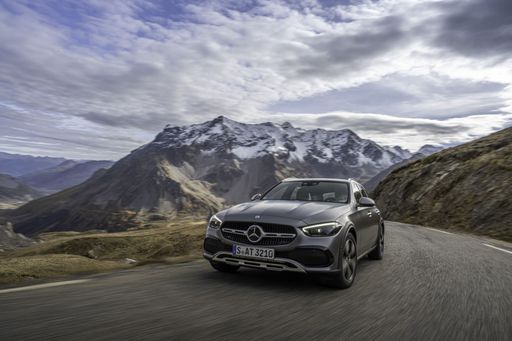 @ Mercedes-Benz Group Media
@ Mercedes-Benz Group Media
Mercedes C-Class Wagon
Alfa Romeo Junior
The Alfa Romeo Junior captures the essence of Italian design with its sleek lines and compact dimensions, making it an icon of elegance and performance. With a spirited driving experience and a charming retro aesthetic, it appeals to enthusiasts and casual drivers alike. This delightful car embodies the brand's rich heritage while remaining a fun and engaging option for those seeking a unique automotive experience.
details @ Alfa Romeo / Stellantis Media
@ Alfa Romeo / Stellantis Media
 @ Alfa Romeo / Stellantis Media
@ Alfa Romeo / Stellantis Media
 @ Alfa Romeo / Stellantis Media
@ Alfa Romeo / Stellantis Media
Mercedes C-Class Wagon
The Mercedes-Benz C-Class Wagon offers a perfect blend of luxury and practicality, appealing to those who value both style and functionality in their vehicle. Its elegant design is complemented by a spacious and versatile interior, making it ideal for family trips or business travel. With advanced safety features and state-of-the-art technology, this estate car provides a driving experience that is both secure and enjoyable.
details @ Mercedes-Benz Group Media
@ Mercedes-Benz Group Media
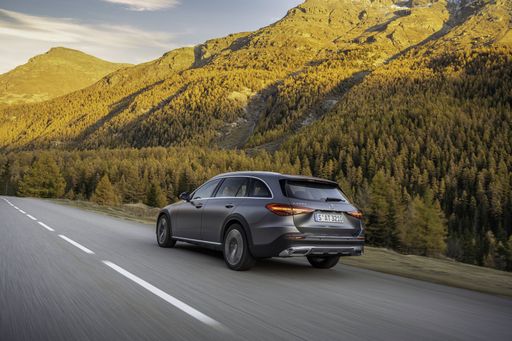 @ Mercedes-Benz Group Media
@ Mercedes-Benz Group Media
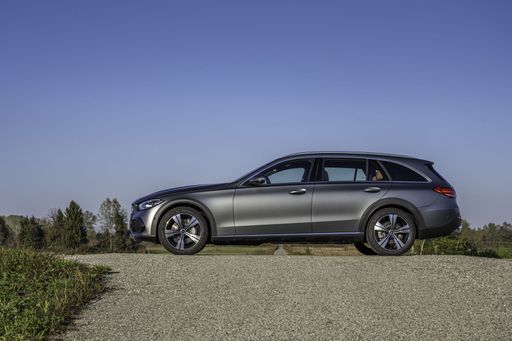 @ Mercedes-Benz Group Media
@ Mercedes-Benz Group Media
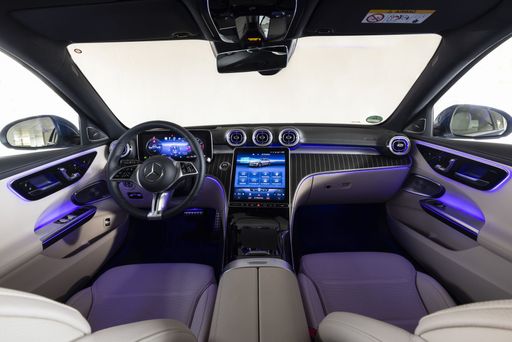 @ Mercedes-Benz Group Media
@ Mercedes-Benz Group Media
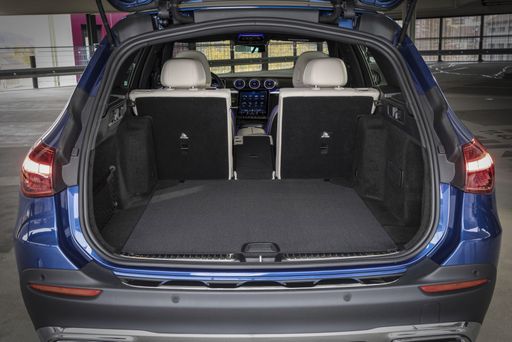 @ Mercedes-Benz Group Media
@ Mercedes-Benz Group Media
 @ Alfa Romeo / Stellantis Media
@ Alfa Romeo / Stellantis Media
|
 @ Mercedes-Benz Group Media
@ Mercedes-Benz Group Media
|
|
|
|
Costs and Consumption |
|
|---|---|
|
Price
25700 - 41600 £
|
Price
42400 - 115300 £
|
|
Consumption L/100km
4.8 - 5.4 L
|
Consumption L/100km
0.4 - 9 L
|
|
Consumption kWh/100km
15.1 - 17.5 kWh
|
Consumption kWh/100km
-
|
|
Electric Range
344 - 410 km
|
Electric Range
11 - 112 km
|
|
Battery Capacity
0.4 - 51 kWh
|
Battery Capacity
19.50 kWh
|
|
co2
0 - 119 g/km
|
co2
11 - 206 g/km
|
|
Fuel tank capacity
44 - 45 L
|
Fuel tank capacity
40 - 66 L
|
Dimensions and Body |
|
|---|---|
|
Body Type
SUV
|
Body Type
Estate
|
|
Seats
5
|
Seats
5
|
|
Doors
5
|
Doors
5
|
|
Curb weight
1380 - 1689 kg
|
Curb weight
1755 - 2235 kg
|
|
Trunk capacity
340 - 415 L
|
Trunk capacity
360 - 490 L
|
|
Length
4173 mm
|
Length
4751 - 4842 mm
|
|
Width
1781 mm
|
Width
1820 - 1900 mm
|
|
Height
1505 - 1538 mm
|
Height
1454 - 1494 mm
|
|
Max trunk capacity
1205 - 1280 L
|
Max trunk capacity
1375 - 1510 L
|
|
Payload
390 - 420 kg
|
Payload
440 - 565 kg
|
Engine and Performance |
|
|---|---|
|
Engine Type
Electric, Petrol MHEV
|
Engine Type
Petrol MHEV, Plugin Hybrid, Diesel MHEV
|
|
Transmission
Automatic
|
Transmission
Automatic
|
|
Transmission Detail
Dual-Clutch Automatic, Reduction Gearbox
|
Transmission Detail
Automatic Gearbox
|
|
Drive Type
Front-Wheel Drive, All-Wheel Drive
|
Drive Type
Rear-Wheel Drive, All-Wheel Drive
|
|
Power HP
136 - 280 HP
|
Power HP
186 - 680 HP
|
|
Acceleration 0-100km/h
5.9 - 9.1 s
|
Acceleration 0-100km/h
3.4 - 8.8 s
|
|
Max Speed
150 - 206 km/h
|
Max Speed
226 - 280 km/h
|
|
Torque
230 - 345 Nm
|
Torque
250 - 1020 Nm
|
|
Number of Cylinders
3
|
Number of Cylinders
4
|
|
Power kW
100 - 207 kW
|
Power kW
137 - 500 kW
|
|
Engine capacity
1199 cm3
|
Engine capacity
1496 - 1999 cm3
|
General |
|
|---|---|
|
Model Year
2024 - 2025
|
Model Year
2024 - 2025
|
|
CO2 Efficiency Class
A, C, D
|
CO2 Efficiency Class
E, F, G, B, D
|
|
Brand
Alfa Romeo
|
Brand
Mercedes-Benz
|
What drive types are available for the Alfa Romeo Junior?
Available configurations include Front-Wheel Drive or All-Wheel Drive.
The prices and data displayed are estimates based on German list prices and may vary by country. This information is not legally binding.
